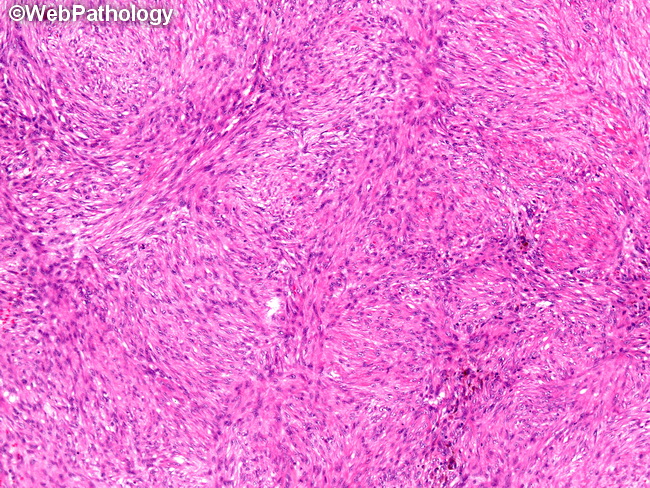Nodular Fasciitis : Molecular Genetics


Comments:
A recurrent translocation t(17;22)(p13;q13) has been reported in nodular fasciitis. This results in overexpression of USP6 gene on 17p13 due to the fusion of its coding region with the promoter of MYH9 on 22q13.1. Identification of this translocation by traditional cytogenetics is quite challenging as the chromosomal breakpoints are located at the ends of the involved chromosomes. However, RT-PCR and FISH are highly specific and sensitive in detecting MYH9-USP6 fusion. Some cases involve other partner genes that drive the overexpression of USP6. This molecular finding of a recurrent translocation supports the idea of nodular fasciitis being a neoplasm. And given the self-limited nature of the process, a novel concept of transient neoplasia has been proposed for nodular fasciitis. Cytogenetic abnormalities documented in nodular fasciitis include: rearrangement of 3q21, marker chromosomes, loss of chromosomes 2 and 13; and t(2;15). References:1. Erikson-Johnson MR et al. Nodular fasciitis: a novel model of transient neoplasia induced by MYH9-USP6 gene fusion. Lab Invest 2011 Oct;91(10)1427-33. 2. Patel NR et al. USP6 activation in nodular fasciitis by promoter-swapping gene fusions. Mod Pathol 2017 Nov;30(11):1577-1588.



